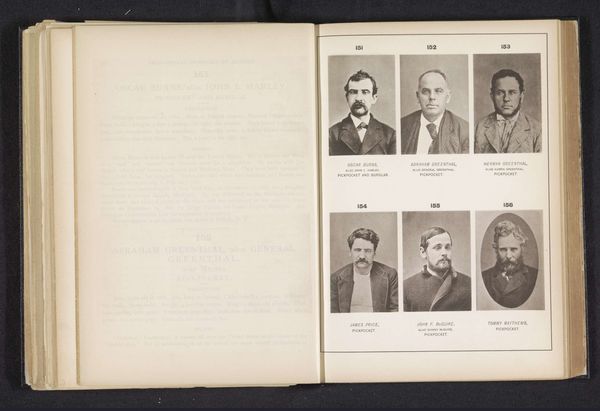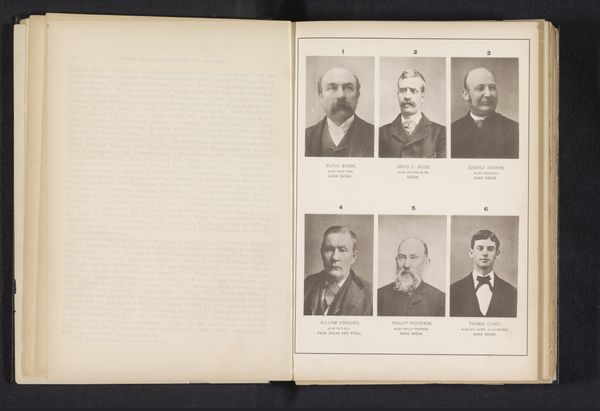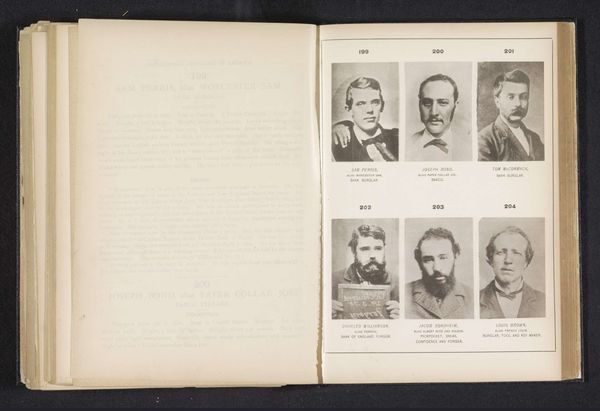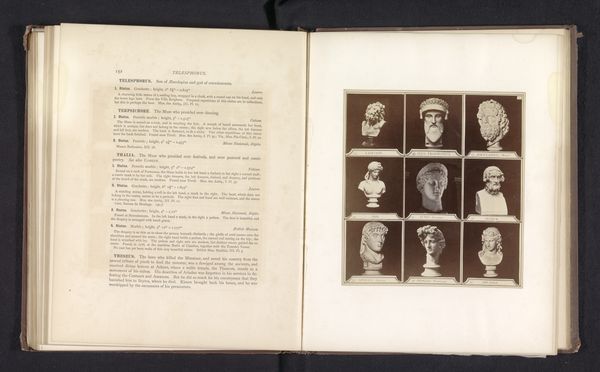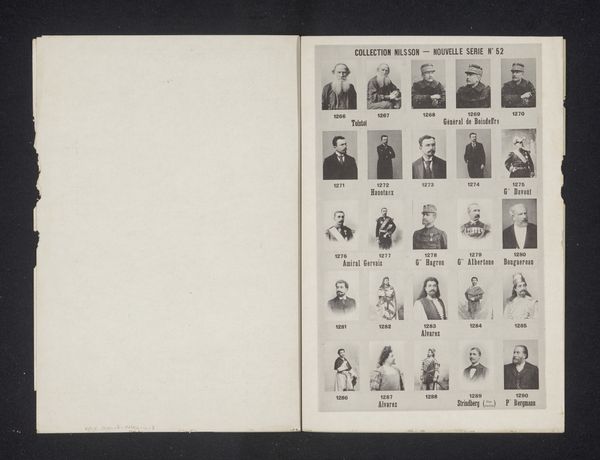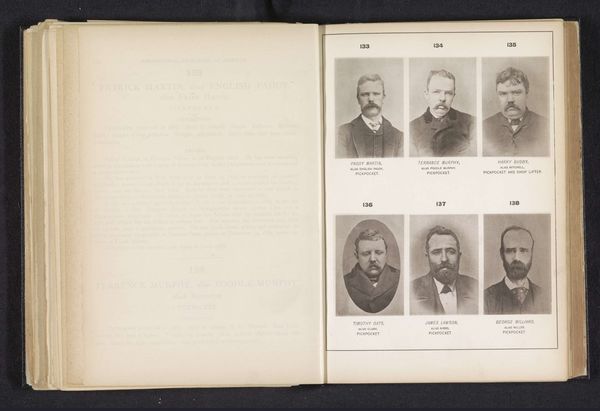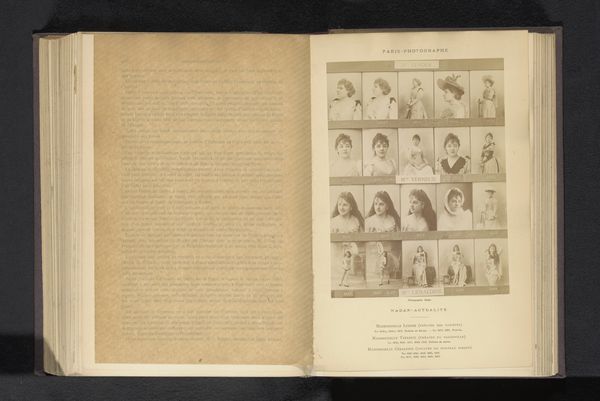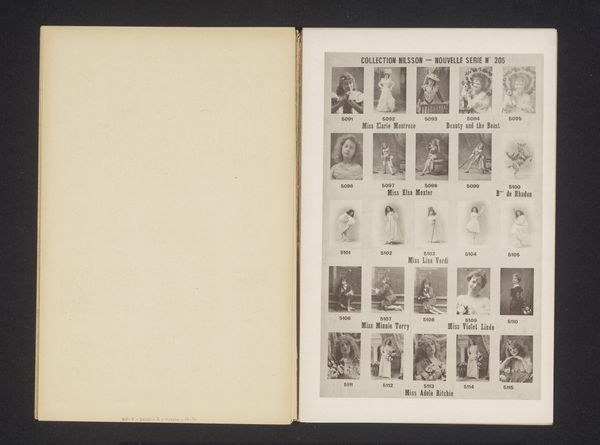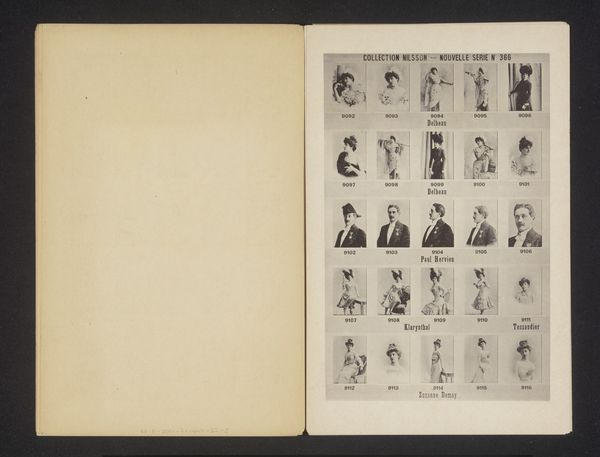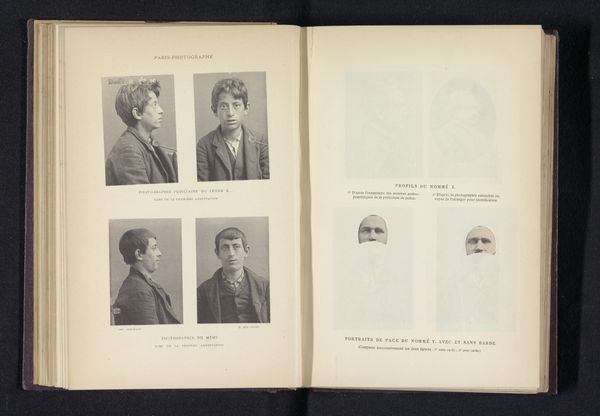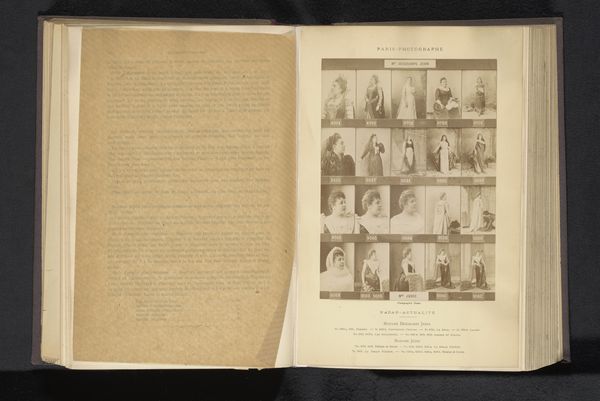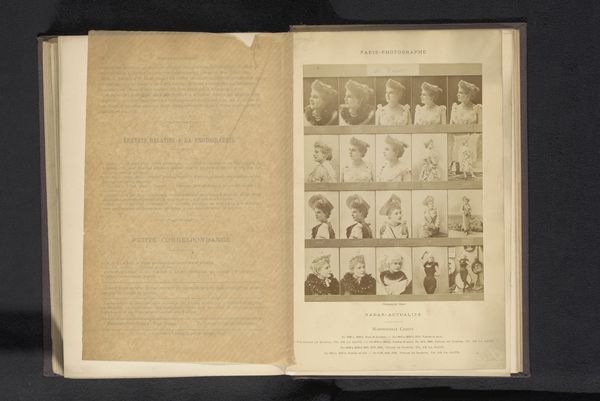
drawing, paper, pencil, graphite
#
portrait
#
drawing
#
medieval
#
figuration
#
paper
#
form
#
coloured pencil
#
pencil
#
graphite
#
academic-art
#
profile
#
realism
Dimensions: height 243 mm, width 157 mm
Copyright: Rijks Museum: Open Domain
Curator: Here we have "Negen mannenhoofden, gerangschikt op de vorm van hun voorhoofd," a drawing that pre-dates 1893, created by an anonymous artist. The medium includes pencil, graphite, and colored pencil on paper. It appears to be a page from a larger volume. Editor: It reminds me of the pseudo-science of phrenology— immediately evoking unsettling questions about the history of physiognomy and its implications. The formal arrangement belies what feels like a deeply problematic endeavor. Curator: You’re not wrong to see a connection. Publications that classify people according to facial features gained popularity in the 19th century and were regrettably pervasive in the human sciences, influencing both scientific and popular thought. The pursuit of objective, "scientific" classification always comes at the cost of subjectivity, though. Editor: Precisely. And we have to consider what legitimizing this sort of thinking might do. Each head, rendered in meticulous detail, reinforces an attempt to establish hierarchy and supposed innate characteristics based solely on the shape of a forehead. How does this function to serve systems of power? Who is given authority in this arrangement, and at whose expense? Curator: That's an incisive question. In looking at this from a historical perspective, we have to examine the function of these images. Who were they for? They arguably gave rise to ideas on criminality and ‘types’ of people. One can even draw lines of thought from here to discriminatory practices. Editor: The arrangement is particularly jarring. A matrix of faces implies some order, a taxonomy. In the margins, one can almost see how quickly pseudo-science morphs into full-blown policy. It begs a critical discussion on what happens when we treat human beings as specimens. Curator: Yes, seeing this within a book really emphasizes the formal, institutional, and social systems from which ideas around difference emanated. So what’s your ultimate takeaway? Editor: It makes me think about the ethical responsibilities tied to image-making. This innocuous drawing acts as a chilling reminder of the social power inherent to categorization, urging us to question and resist biased or dehumanizing visual narratives. Curator: Agreed, understanding the context is key to comprehending the power—and potential dangers—of visual representation. Thank you.
Comments
No comments
Be the first to comment and join the conversation on the ultimate creative platform.
